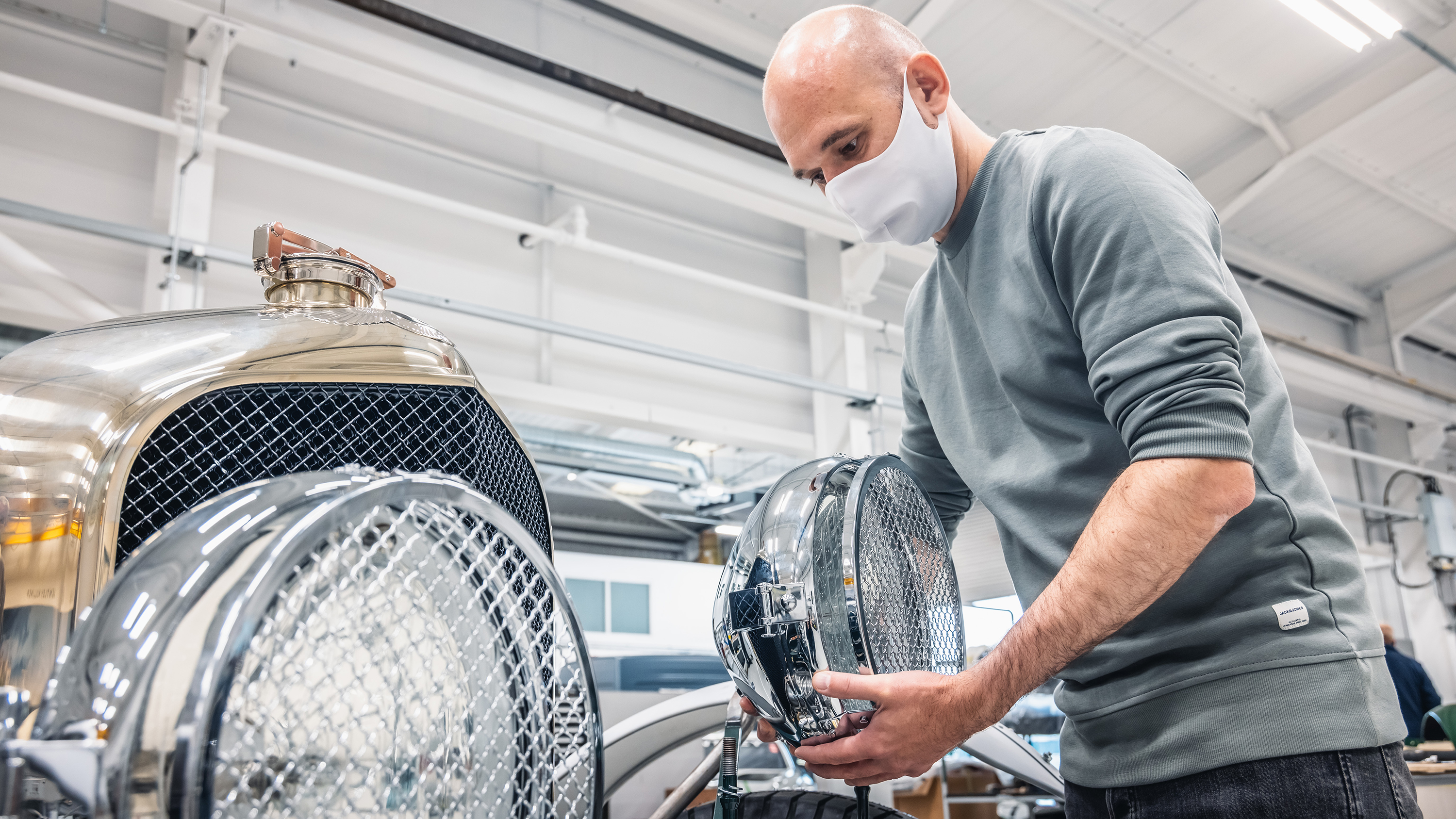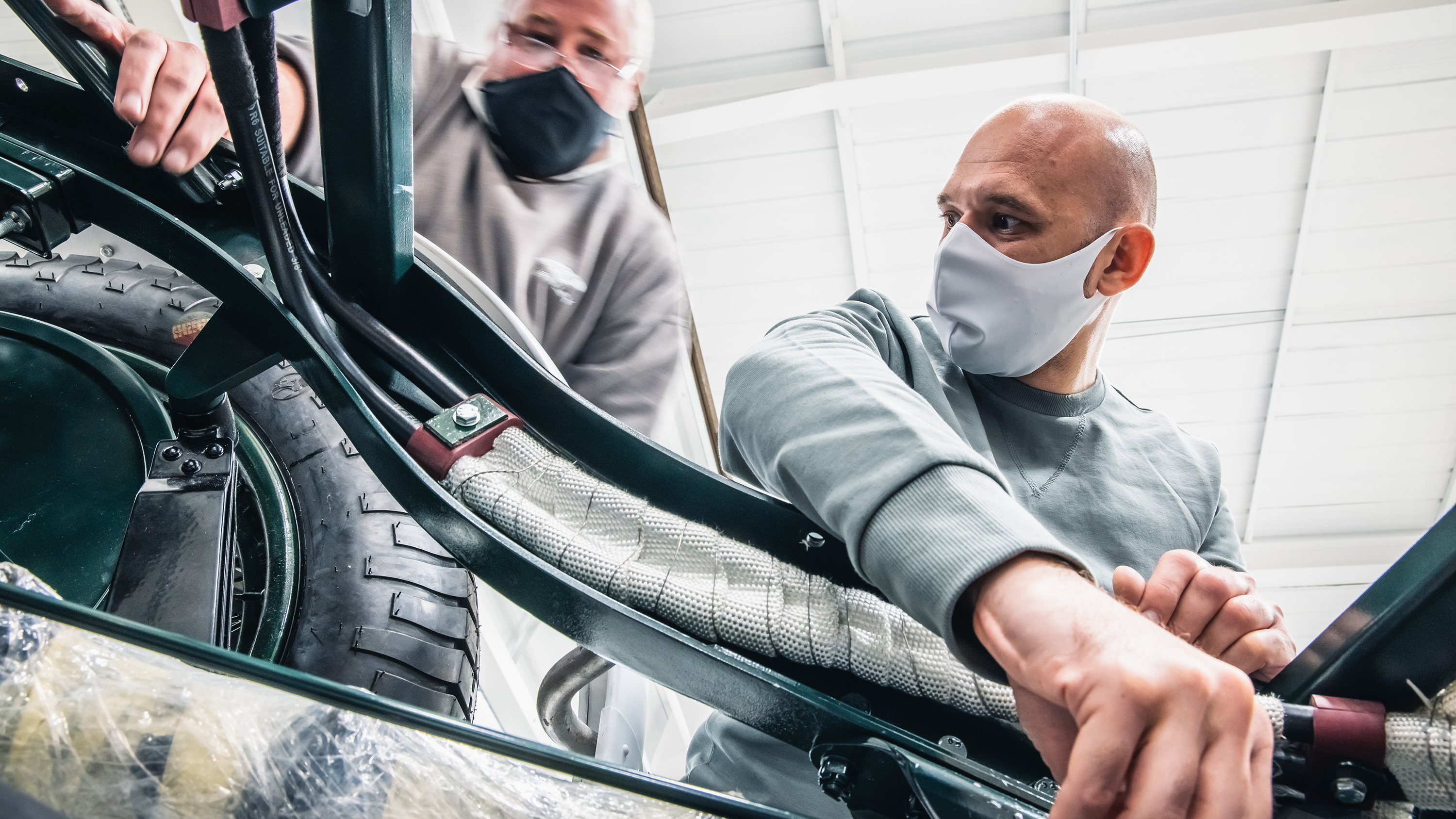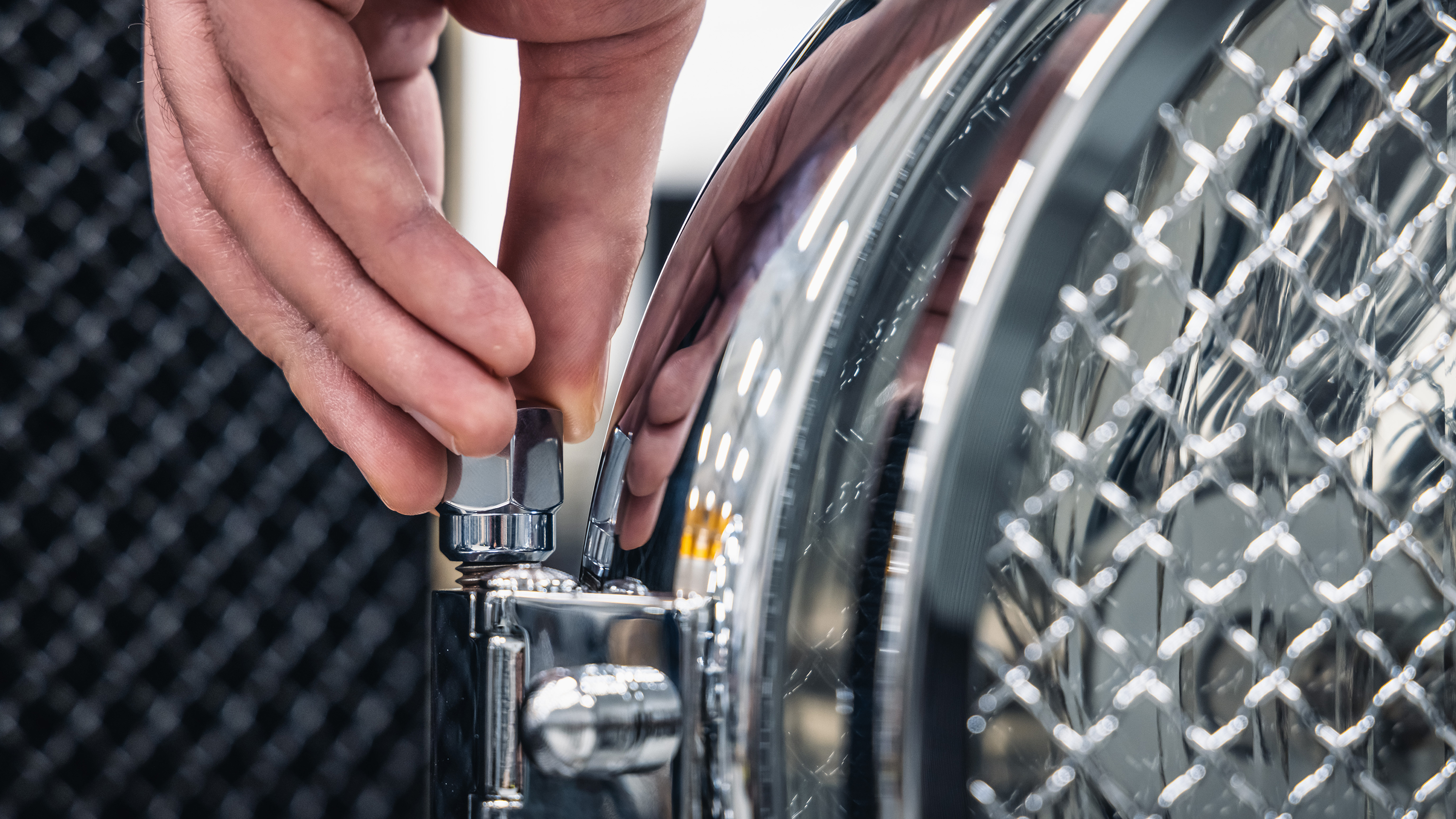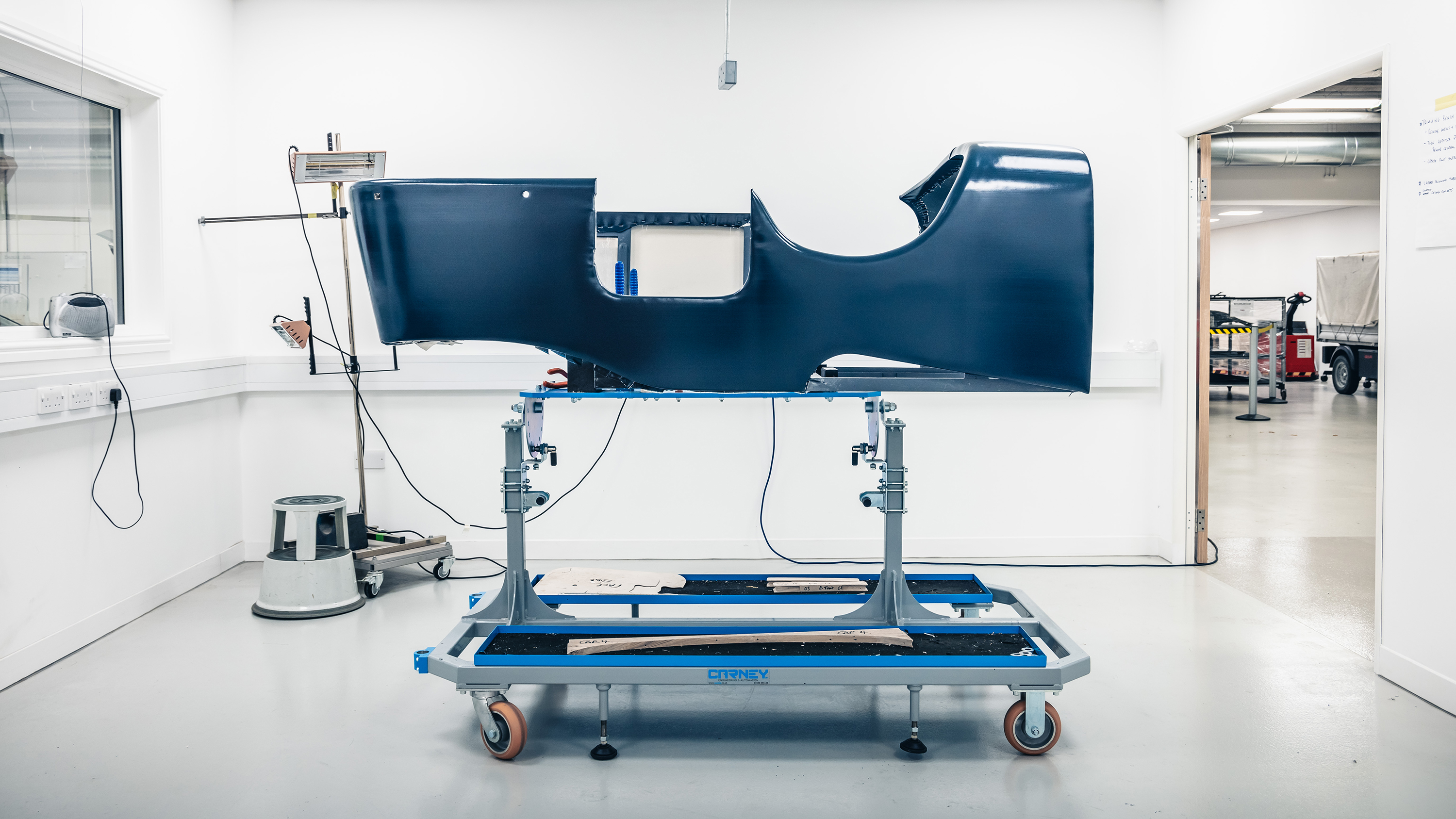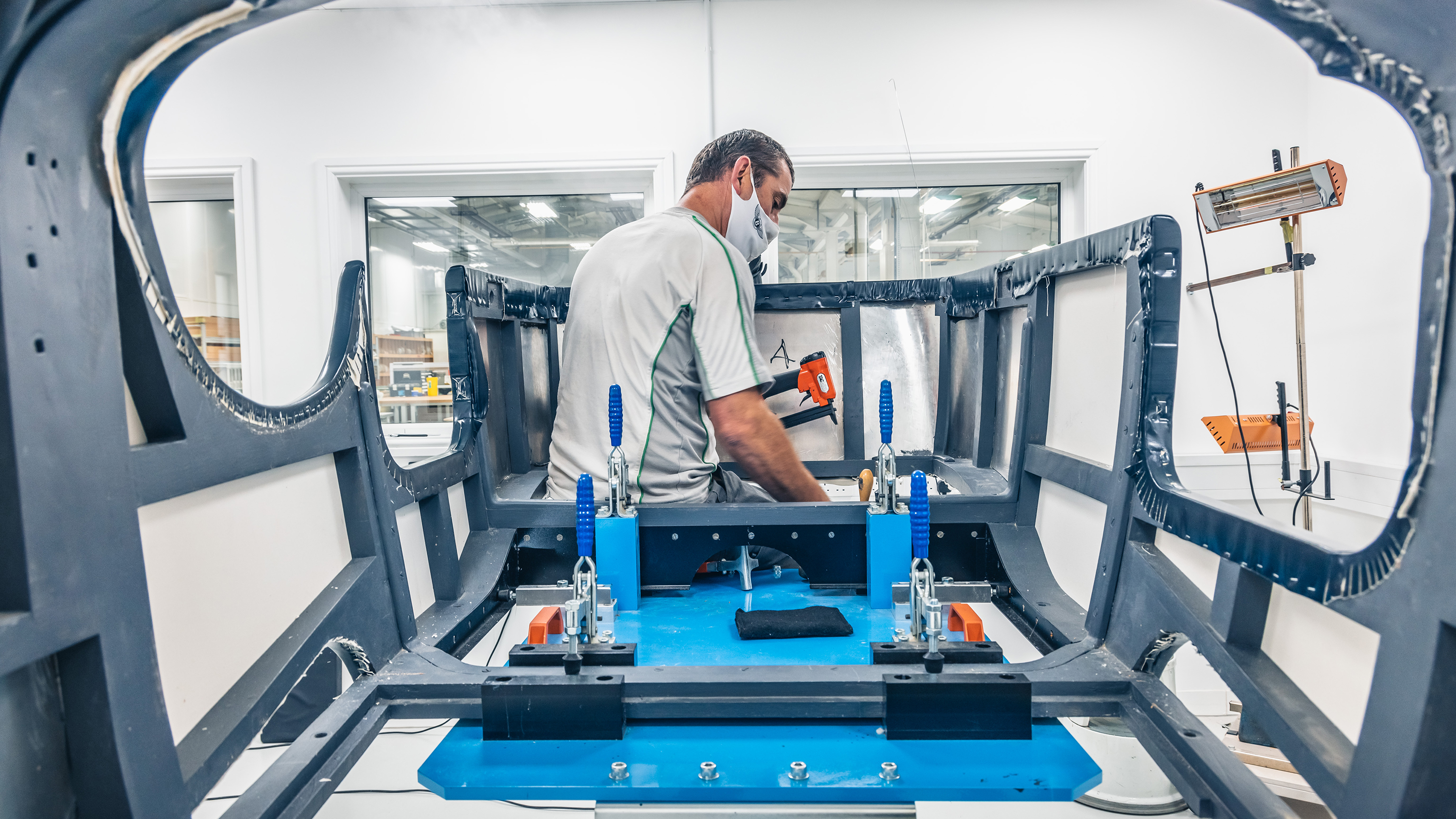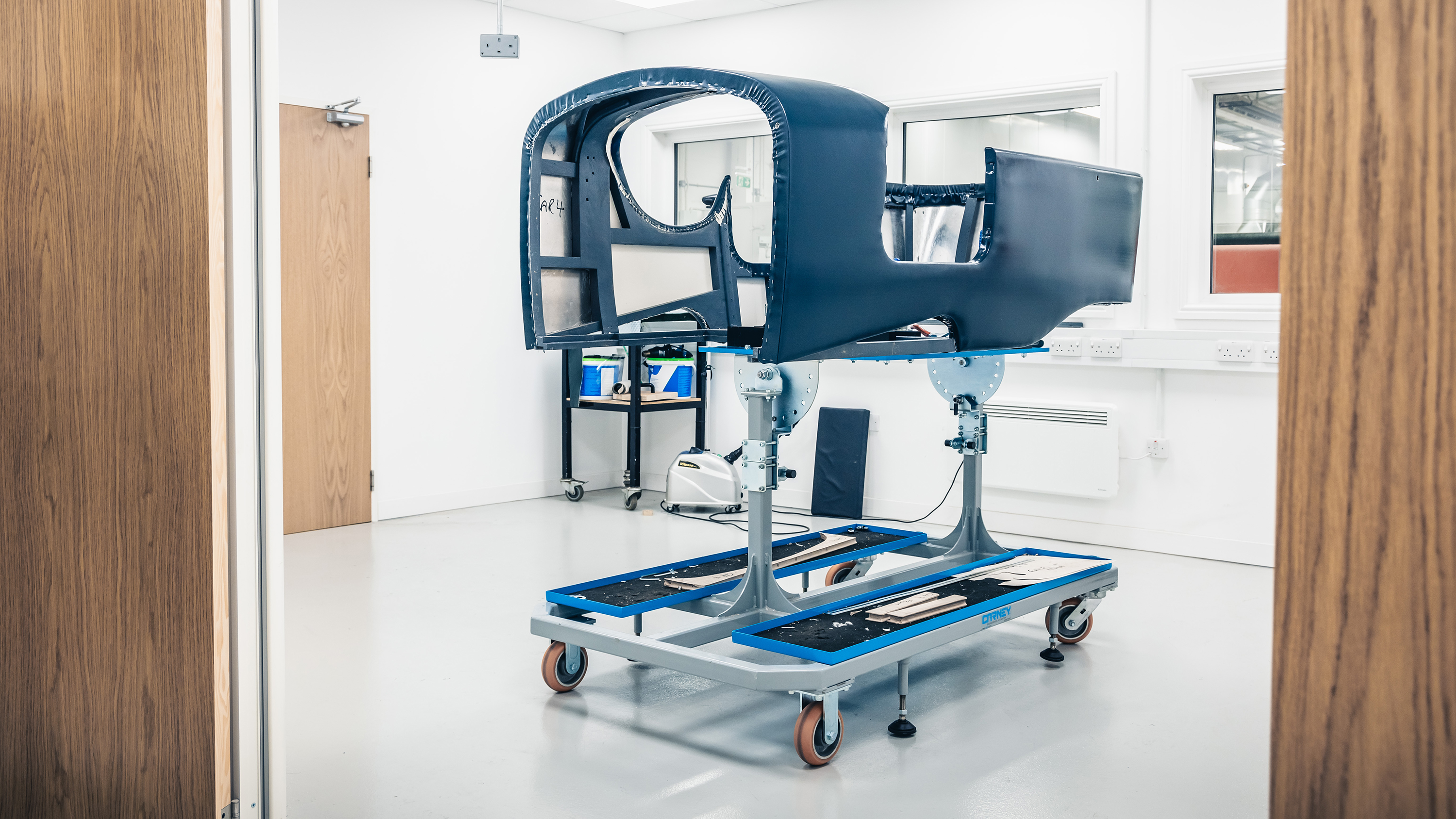
How do you build a brand new Bentley Blower?
Top Gear gets its fingernails dirty on a production line like no other, as Bentley makes a dozen new 1920s racecars
It’s calm. Almost eerily so. If you visit Mulliner with previous experience of any British car factory – Morgan’s quaint Malvern workshops included – and you’ll quickly begin to wonder if you missed a fire drill.
This is a thoroughly different production line, not least because it’s ostensibly making 92-year-old cars. We’re right at the heart of Bentley’s bespoke offshoot and its run of 12 continuation Blowers, wandering gingerly around cars two to six, but the workshop's as still as a pan of water just placed on the hob. Nothing’s simmering yet.
Photography: Jonny Fleetwood
Seeing these cars lined up in gradual states of build is like the most bewitching evolution chart possible. At one end of the brightly lit, neatly organised room is a chassis awaiting a dummy engine and supercharger to start the basics of its build. At the other, there’s a Blower with its fabric hood up – quite a sight, given we’re used to seeing the original sans roof, driven in moderate anger – receiving some final droplets of lubrication.
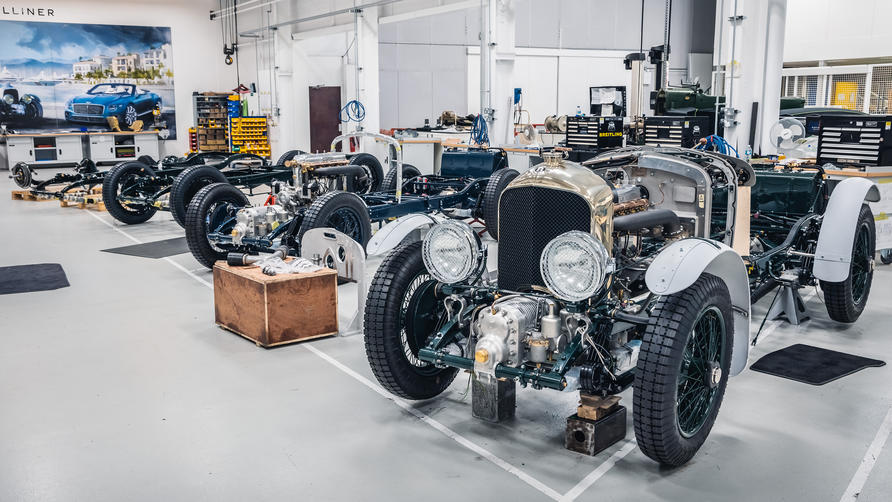
The peace is about to be disturbed, however, by a plonker with scant mechanical skill. I regularly attempt to make up for that with mechanical sympathy, but the two are quite crucially different. And some of my tasks today - as I’m whipped through an accelerated apprentice programme, genuinely building some Blower - will need quite the opposite of sympathy.
“My office is up above the workshop,” says Mulliner’s Paul Dickinson, “and there's often days when you have to put the phone down because it's too noisy, because there's somebody welding, using a drill or absolutely smacking the pants out of a bit of metal with a hammer.”
As you might expect, building a 1929 car to 1929 standards is quite tricky. It involves a degree of unlearning. Mulliner took an original Blower, stripped it down to see how it was made, and is now building this dozen-strong run of 2020s Blowers with all of the original quirks built in. And without a single metric measurement, too. It’s a 9/16th spanner or nothing here.
“Step one was to take that car apart and scan it so we could understand every component of it and what material it was all made out of,” says Paul. “And then we compared it to the various blueprints and discovered it was a bit different, because a racecar evolves over time. Which is obviously a challenge.
“So it was quite a journey to investigate what the car was actually like for Le Mans in 1930, because that's been our intent: it’s as if we were building 12 more cars to follow on. Authenticity is paramount to us in this, so that people can look upon it and go ‘that's an authentic product that Bentley Motors have created’. It's not a recreation.”
My task today won’t be sympathetically smacking the pants out of one Blower, but rather being the ‘to me’ to the Mulliner workforce ‘to you’. The zen-like pace of this production line means I’ll be best deployed as a details man, tightening screws here and holding the heavy end of bulkheads there to further the progress of several cars on the line. Focusing on one single Blower might involve a bit of waiting.
Because let’s just say continuation components don’t flow steadily into the factory like the bejewelled headlights or Toblerone sat navs of the Continentals and Flying Spurs across the road in Bentley’s main Crewe factory. There’s a supply chain, but it’s one befitting the car.
“There are little guys in sheds that have been doing what they do for these kind of cars for decades,” says Paul. “It's a father and son that make the headlamps, and literally, they're in their shed. There is no way that we can jump in and make a headlight better than they can.
Top Gear
Newsletter
Thank you for subscribing to our newsletter. Look out for your regular round-up of news, reviews and offers in your inbox.
Get all the latest news, reviews and exclusives, direct to your inbox.
“These guys often don't even have email addresses, let alone all the normal gubbins you'd need to set up purchase orders and stuff. There's basically one guy in the world who can make the worm detector gearbox. ‘I need 12 and I need them all one month apart, please’ is not the timeframe that these guys are used to working to.”
It was never on the table to modernise anything. It’s as authentic as the law allows
And thus the moment I’m handed a dazzling headlamp ready to be dropped oh-so-slowly down over a couple of screws and bolted on, I’m suddenly more nervous than when I picked up the mic to do my best man’s speech. I’m holding an item that’s exquisitely made and simply cannot be replaced with haste. Not only will a piece of sublime craftsmanship make an ugly interface with the floor, shattering itself and the calm, but there’ll be an angry customer whose car suffers an unexpected delay.
I cradle it like it’s my first child, shuffling over to the car with almost painstaking decorum in the eyes of the bloke waiting to bolt the thing in place. It’s a wake-up call that I probably need to exhibit at least a little more vigour to make a good impression. I need to hold the Blower and its wondrous build process in some reverence, but also just do my bloomin' job when I’m asked.
I roll up my sleeves, pop on some gloves and start hovering annoyingly around anyone who looks like they need a hand. First up his Neil Sims, who’s spent the last 22 years at Bentley having originally been an apprentice here. Together we’re setting the friction of the brakes, successfully doing the rears but being halted because the front rods are too long and in need of a trim; the quirks of coachbuilding cars. “It’s a dark art,” says Neil. “Books they made at the time tell you roughly what to do, but not everything. You need to speak to someone who’s owned and worked on them before when you get stuck.”

Then it’s over to Nathan Betteley, a one-year-old when Neil’s current stint begun, but still a man with five years of experience having joined Mulliner as an apprentice from school. He currently works exclusively on the Blower line and is endlessly forgiving of how timidly my hands are relaying his instructions as we slot in the bulkhead, spray primer onto brackets and twirl the fiddly screws of the thermostat nice and tight. “The thermostat is authentic but the cooling process it kicks in is modern,” he says. “Twenties racecars weren’t meant to be sitting in traffic, but these might…”
Before I have the chance to see whether Neil and Nate immediately reverse any botched handiwork, I’m off to help trim seats – via horsehair sourced locally from Sandbach, looking disconcertingly like something else in its delivery box – before discovering the truly bewitching world of Rexine for my last task of the day.
You might reasonably ask ‘what on earth is Rexine?’. I certainly did, while wielding a staple-gun awaiting the commands of Martin Murray, a Bentley employee since he was 18.
“In the Twenties it was designed to be cheaper than leather, but now it’s so hard to fix that this is the rare expensive material now,” he says. It’s essentially a manmade fabric that stretches over the doors and core bodywork, a flexible and water-resistant material used in cars long ago but long replaced by those new-fangled metal panels.
It’s supremely satisfying to watch Martin at work as he trims a Blower in natty navy blue, steaming the Rexine to make it malleable before it cools down and hardens into position, all within a temperature-controlled box around the corner from the production line, designed to keep the material free of creases. One clumsy move and I’ll elbow a hole right through it, but my mentor’s happy for me to help secure a piece into shape around the Blower’s rump.
Each continuation Blower will have around £12,500 worth of Rexine – less than a single per cent of its overall cost, but hardly pocket change if I bugger things up. My mechanical sympathy is cranked back up to its fullest as Martin coolly explains that some vintage car owners order a new Rexine body so they can thrash their toys on track while keeping the original bodywork safe and sound in the garage for when it’s resale time.
In any other car factory, dawdling around on stapling duty would involve something dull and clerical. But not at Mulliner, and not when those staples are a component part of a car with the majesty of the reborn Bentley Blower. I’m happy to be relegated to the mere details because this car is all about the details. Never have I pored over something mouth agape for an entire day, but it’s impossible not to. Mulliner's forensic accuracy is beyond obsessional and ought to win over even the most hardened continuation car cynics. Panels that could be one simple piece rather than six bodged-together ones – like they ended up on that original racecar – simply aren’t.
“It was never on the table to modernise anything,” I’m constantly reminded. “It’s as authentic as the law allows.” This may be the calmest car factory in the country at first glance, but there’s a whole world of gruelling work bubbling under the surface if you look hard enough.
Trending this week
- Car Review
BMW iX3







